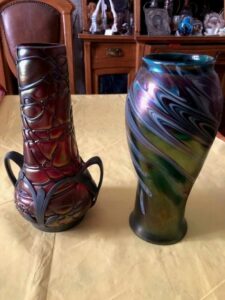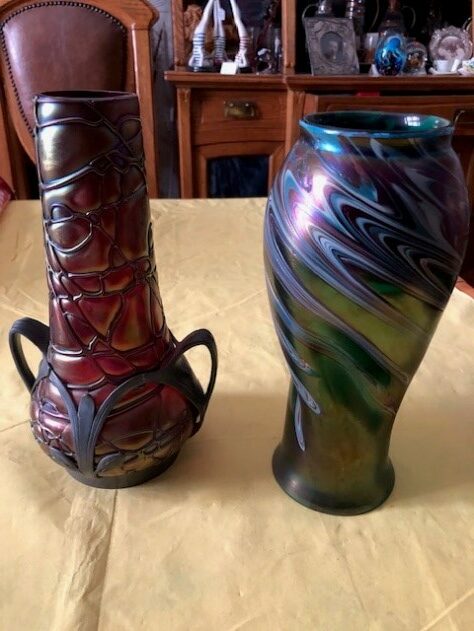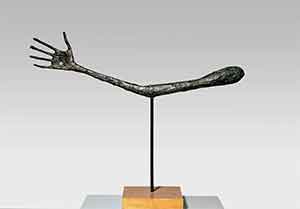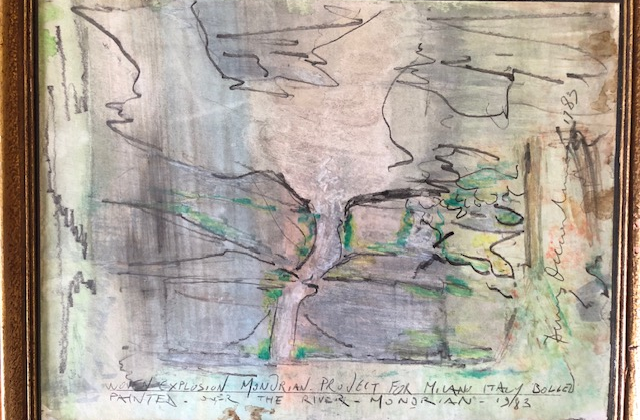Loetz, outstanding examples of Art Nouveau
Prof. Francesco Carelli

Johann Loetz Witwe was an art glass manufacturer in Klostermühle in southwestern Bohemia, Austria-Hungary and then Czechoslovakia. Johann Loetz’s works are among the most outstanding examples of Art Nouveau.
In 1879 Max Ritter von Spaun, a grandson of Johann Lötz, took over the factory from his grandmother and continued to run it under the old company name, “Joh. Lötz Witwe”. The factory had previously been equipped with a significant grinding shop. It was here that heavily cut crystal and cut-through enameled flashing glass were manufactured. The company started to produce the colored glass in the 1860s.
Lötz’ glass has always been a specialty because of its purity and fiery colours, and was initially purchased as raw glass by North Bohemian refineries, who refined the same through painting and grinding. Later, due to the high regard of the glass, the company started production of specialty luxury items. The luxury glass that emerged from the factory received the highest awards. Max Ritter von Spaun had received several awards for his services to the glass industry. In 1883 he received the high distinction of being issued a royal warrant of appointment and being allowed to have the imperial eagle in the shield and seal.
Eduard Prochaska, with the company since 1880, served as director. The sons and grandsons of the workers employed in Joh. Lötz’s glassworks were the tribe of the factory staff, a testament to the good understanding between the employer and the worker. Similar to the glasses from Louis Comfort Tiffany, Loetz was able to produce coloured glasses with high level of metallic iridescence. The company had contacts with other manufacturers such as J. & L. Lobmeyr and E. Bakalowits Söhne in Vienna. Well-known artists with whom he worked were Josef Hoffmann, Koloman Moser, and the Wiener Werkstätte. The peak of the cooperation happened after 1900. The company was represented and won awards at the Paris World’s Fair, and in the Chicago and St. Louis fairs.
The outbreak of the First World War and the collapse of the monarchy brought difficult times for the company. The Second World War and the expulsion of the German-speaking population of Czechoslovakia, and thus a large part of the employees, meant the complete end of the company.





